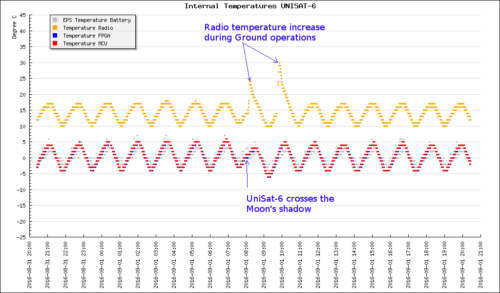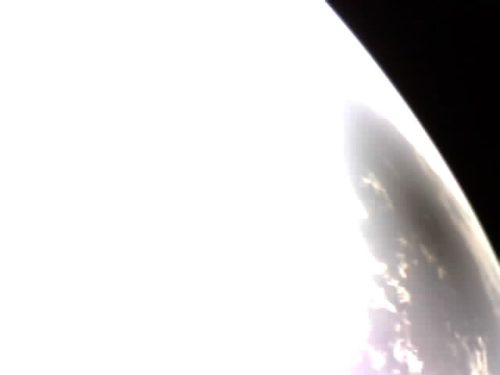This 1st of September, when the eclipse occurred, UniSat6 was able to take a picture of the eclipse over Africa at 07:58:14 UTC.
As the Moon passed between the Earth and the Sun, the satellite photographed the event from its LEO orbit at an altitude of 686.5 km with its onboard camera.
Not only GAUSS satellite has been a viewer of the phenomenon, but it has also experienced the eclipse from both its thermal and electrical power generations perspective: the following graph shows the impact of the passage of the eclipse.

UniSat-6 temperatures of its onboard computer and radio during the eclipse
In the graph it can be seen how the temperature of the satellite increased by 2C during the previous orbit due to the camera being switched on 60 minutes before the eclipse, then at 07:58 UTC the satellite crossed the eclipse and the power generation decreased for a few minutes, the temperature of the electronics dropped by 2C below the nominal temperature, and 5C on the sensors installed on the walls of the satellite.
As we can see, UniSat-6 continues to operate and GAUSS staff is preparing new experiments and tasks for the months ahead, now that the satellite has completed its primary mission.


